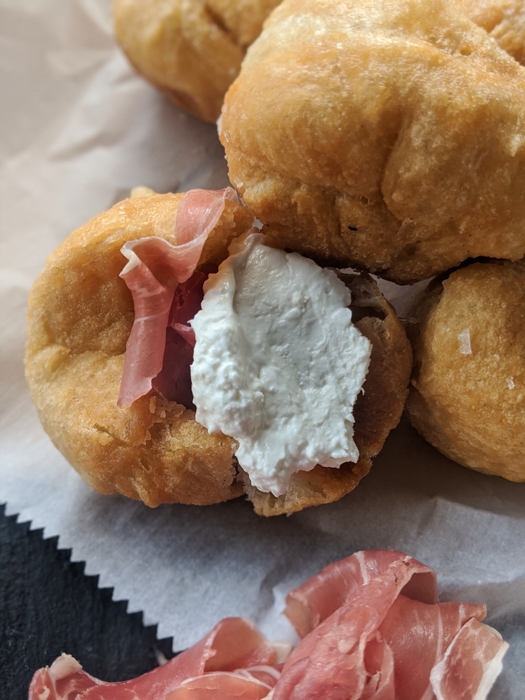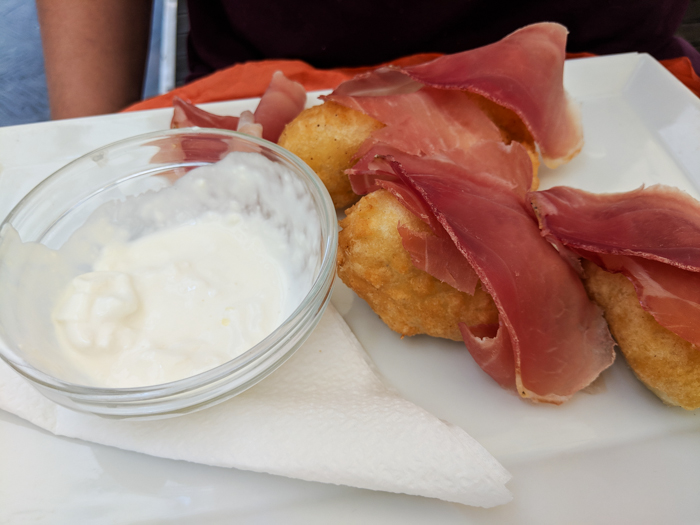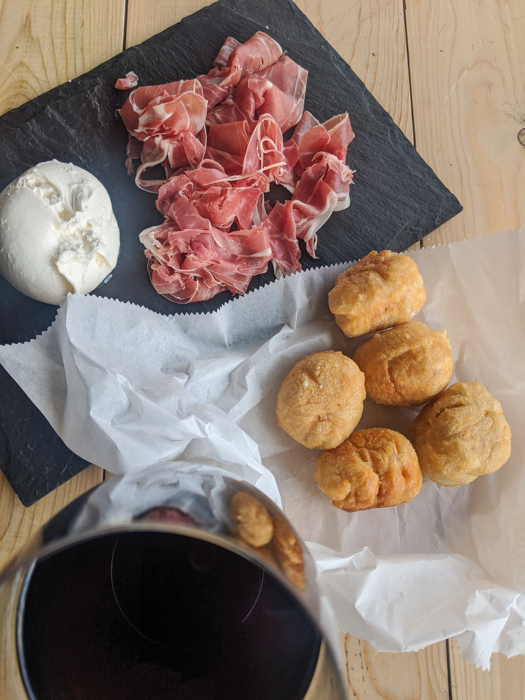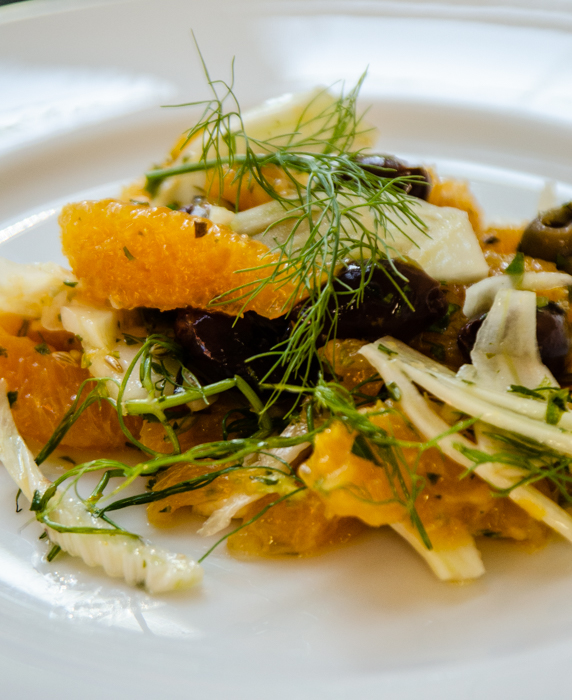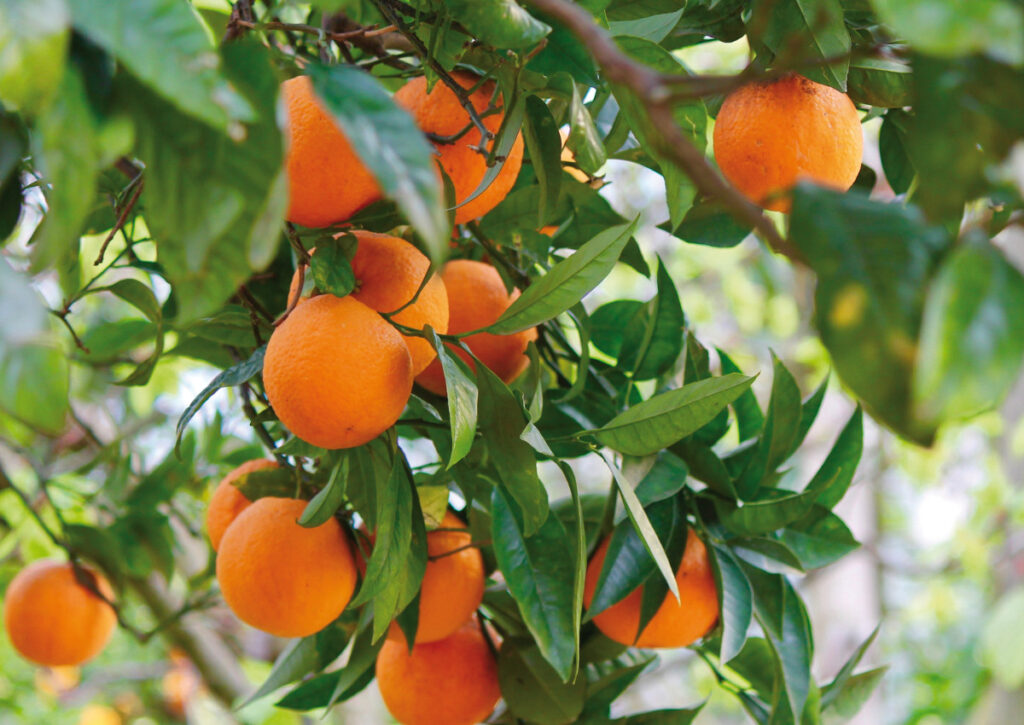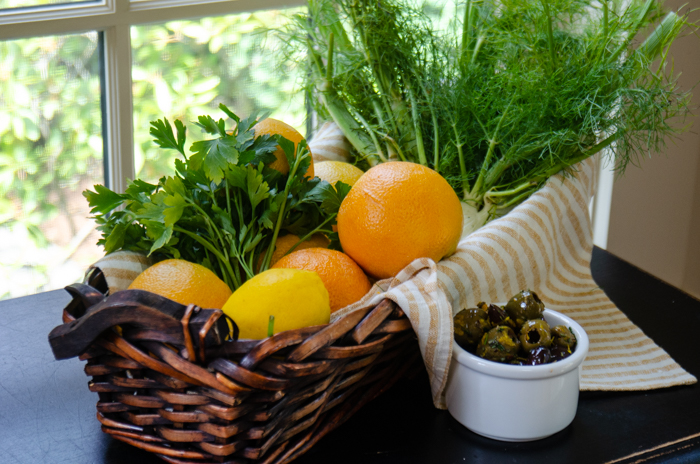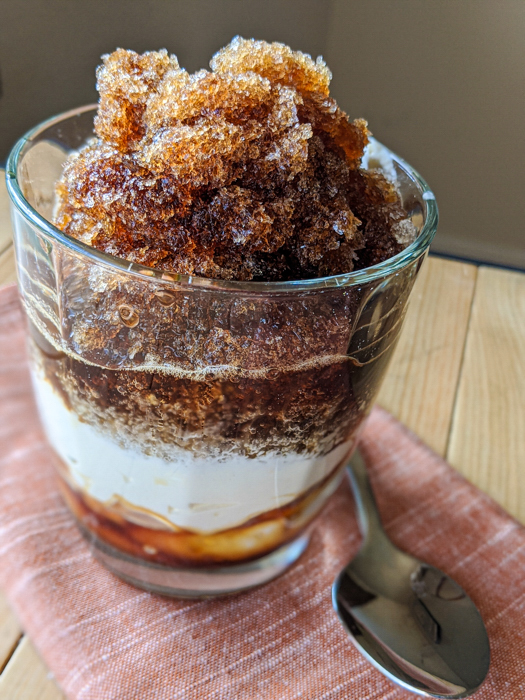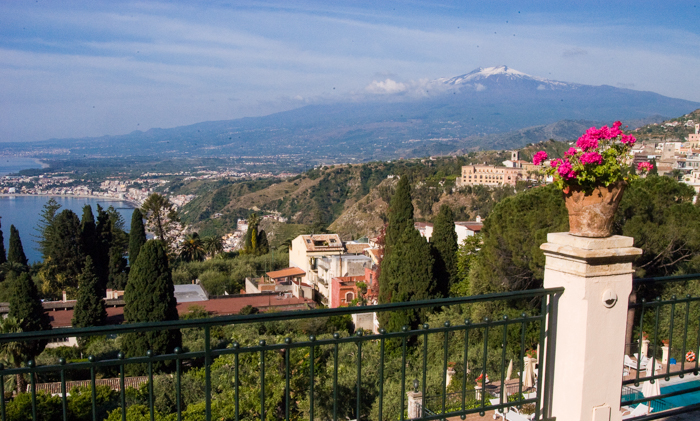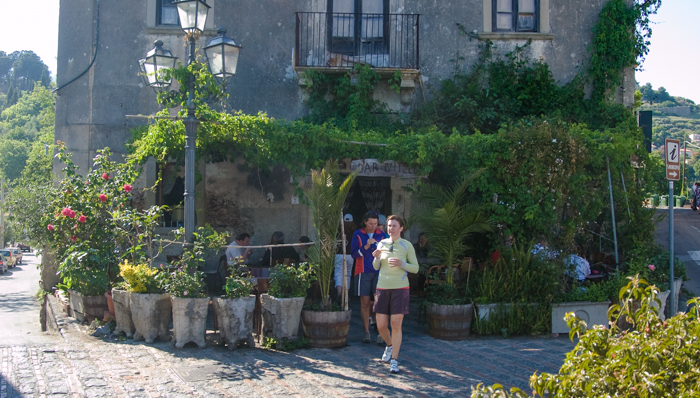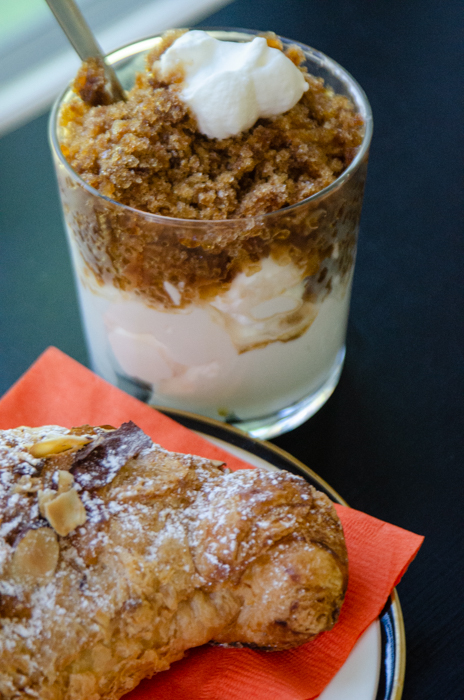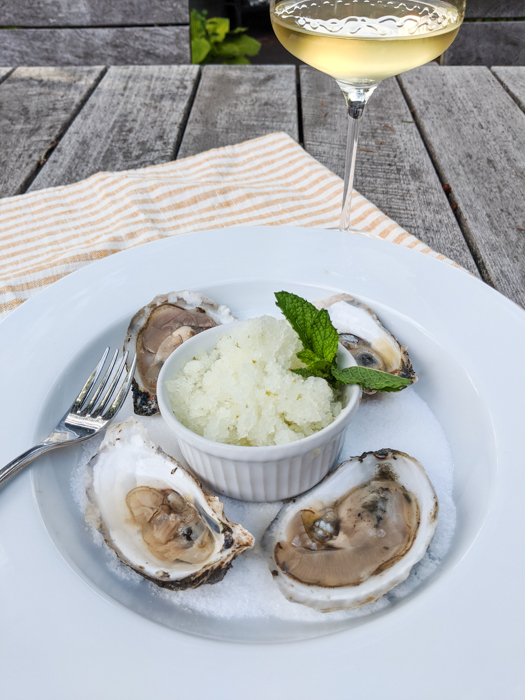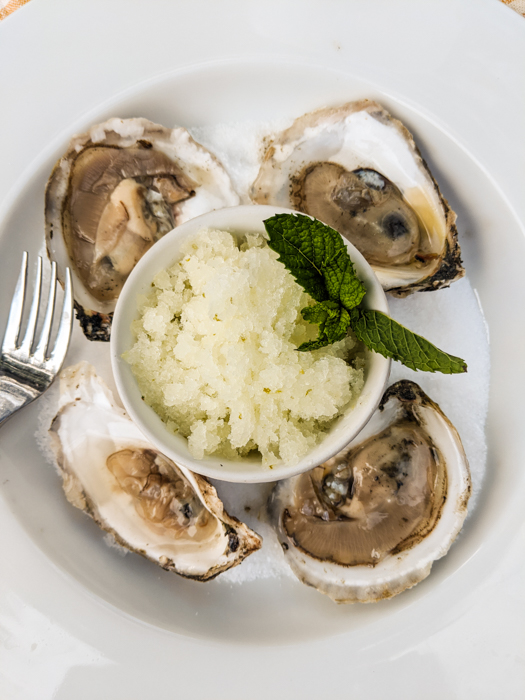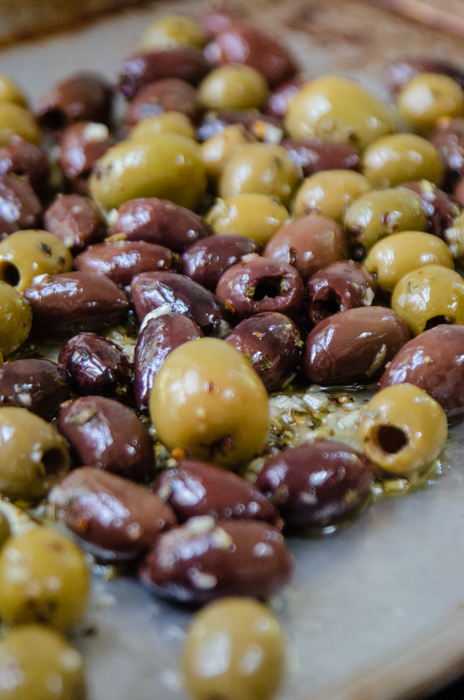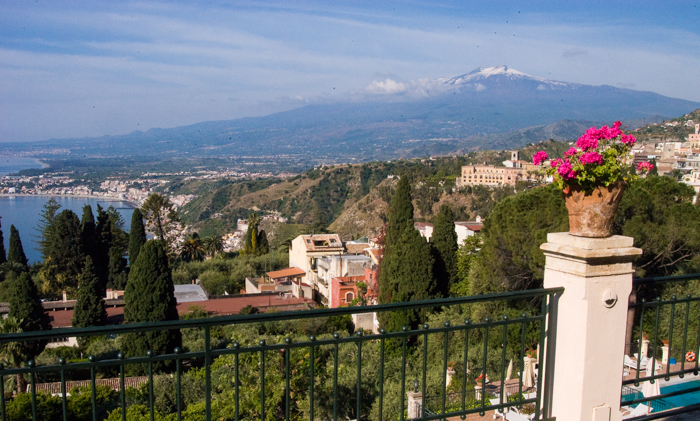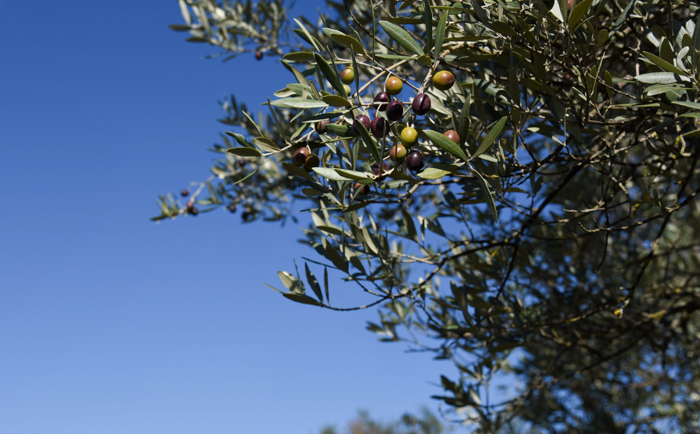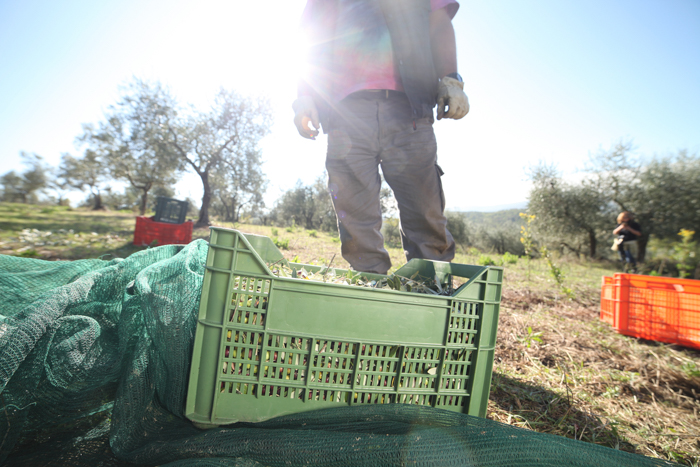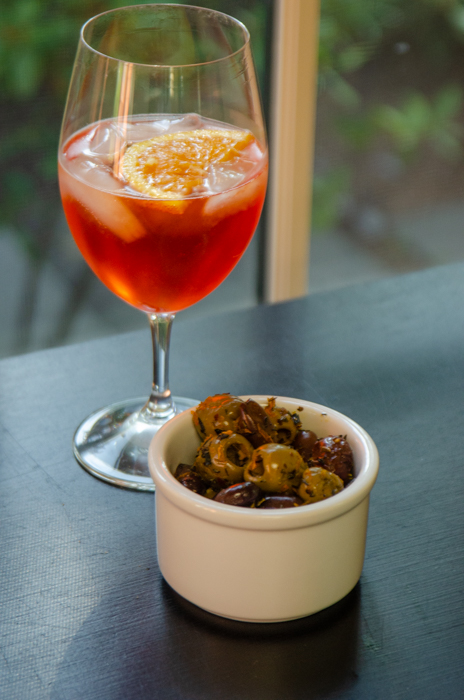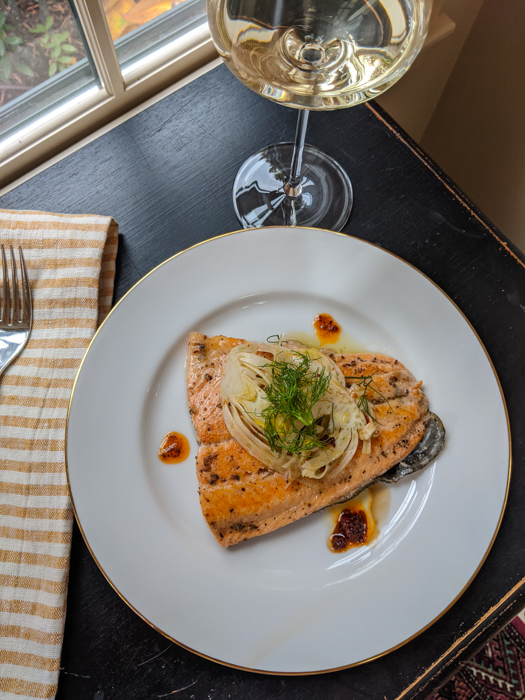
Just north of Milan, nestled in the foothills of the Alps, is the Italian Lake district. Here five lovely lakes – Maggiore, Lugano, Como, Iseo and Garda – together offer an amazing backdrop for our Italiaoutdoors Food and Wine private Italy tours. Stunning scenery, with deep lakes surrounded by majestic mountains; picturesque towns and villages perched on the water’s edge; rolling green hills covered with woodlands and olive trees; elegant palazzi surrounded by formal gardens. With the help of boat travel and cable cars, we can cover a lot of ground without a lot of time in the car, from island hopping to visiting elegant palazzi and gardens, or enjoying a trail hike followed by lunch on a mountain top.

The lakes touch on several regions, so we experience dishes from Piedmont, Lombardy, Trentino, and the Veneto during our adventures. This area offers many delicacies, and a relatively mild climate supports many products you wouldn’t expect to find this far north, including excellent olive oil from Lake Garda, and lemons grown in a limonaia – green houses specifically designed for citrus. Wonderful fresh water fish is easy to find, and simple to prepare back at home.
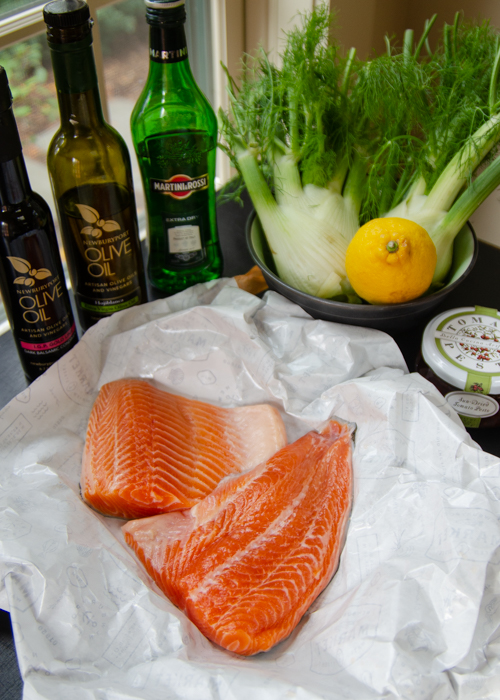
I found the following recipe in Osteria: 1,000 Generous and Simple Recipes from Italy’s Best Local Restaurants, by the Editors of Slow Food. Then, a very similar recipe from Jamie Oliver. So I stole parts for each, and the following are two ways of preparing your favorite fresh water fish as you might find it prepared on Lakes Garda, Como, or Maggiore – the first roasted in parchment paper, the second pan-fried.
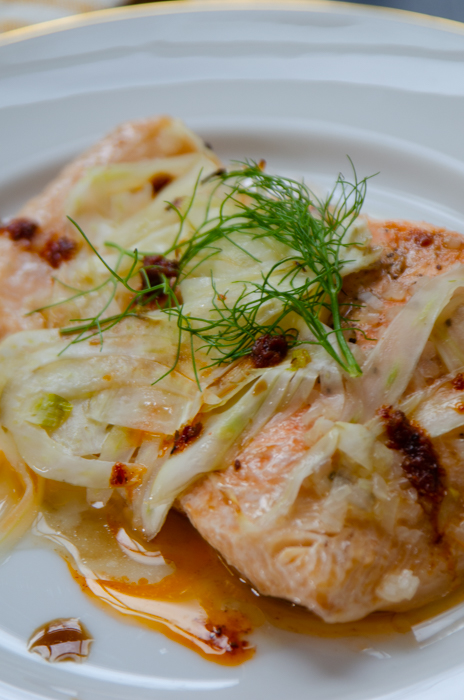
Enjoy with a glass of white wine from the Lugana zone on the south end of Lake Garda, or a sparkling Franciacorta from the shores of Lake Iseo.
Trota in Cartoccio
Trattoria Campagna, Arona (Novara), Lombardia
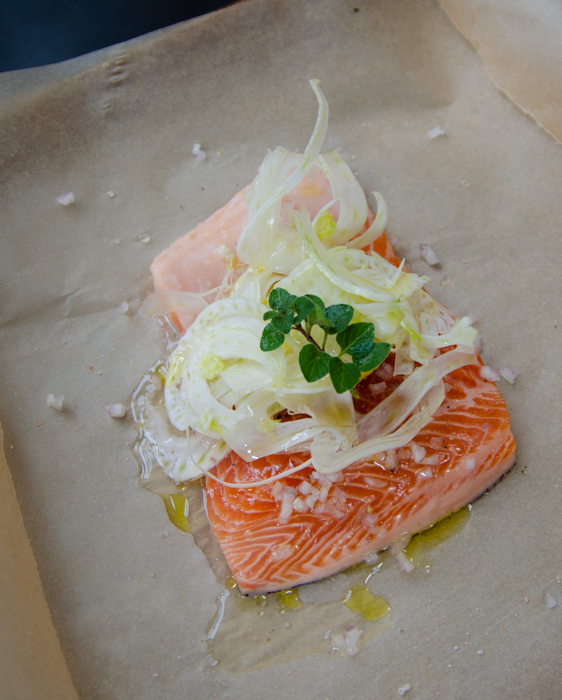
Serves 4
1 head fennel, herby tops reserved
4 whole trout, about 7 ounces each, scaled and gutted or 4 pieces trout or salmon fillets, 6 – 8 ounces each
Salt and freshly ground pepper to taste
2 teaspoons fennel seeds, toasted and ground
1/4 teaspoon hot red pepper flakes
1 shallot, minced
8 sun-dried tomatoes in oil, drained and finely chopped
1 lemon, thinly sliced
1 tablespoon dry vermouth
Extra-virgin olive oil
Using a slicer, or your best knife skills, slice the fennel bulbs lengthwise very very finely and put in a bowl of iced water for 10 minutes or so until the slices go crispy and curly.
Preheat the oven to 450°F. Season the fish with salt and pepper, ground fennel seeds and pepper flakes. Place a sprig of fennel and some of the thinly sliced fennel in the cavity of each one, or on top of the fillet piece. Prepare 4 pieces of parchment paper 12 inches long. Arrange one fish on each piece of parchment. Scatter on the shallot and sun dried tomatoes. Top each fillet with a lemon slice and sprinkle on the vermouth and a generous drizzle of olive oil. Fold up the parchment packet envelope style, folding the top and folding the ends under the fish to seal. Place them on a baking sheet and cook in the preheated oven for 10 minutes. Carefully open one packet (steam will escape) and check that the flesh is opaque. Garnish the fish with lemon slices and serve.
Pan-Roasted Trout with Crispy Fennel Salad
Adapted from “Cook with Jaime” by Jamie Oliver
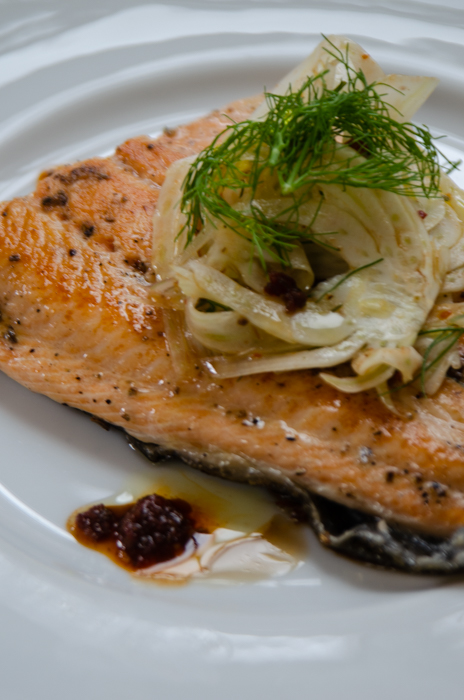
2 fennel bulbs, herby tops reserved
Small bunch of fresh oregano
Juice of 1 lemon
Extra virgin olive oil
8 sun-dried tomatoes in oil, drained and finely chopped
Sea salt and freshly ground pepper
4 pieces trout or salmon fillets, 6 – 8 ounces each
Sea salt and freshly ground black pepper
2 teaspoons fennel seeds, toasted and ground
1/4 teaspoon hot red pepper flakes
Extra virgin olive oil
Good quality thick balsamic vinegar
Using a slicer, or your best knife skills, slice the fennel bulbs lengthwise very very finely and put in a bowl of iced water for 10 minutes or so until the slices go crispy and curly.
Lay the fish fillets on a board, skin side up, then lightly pinch the skin of each one and score it at an angle, about 1/4 inch deep, about 6 times. This will allow the fish not only to cook quicker but to take in the flavors of the seasoning – and it looks pretty too! Sprinkle the fillets with salt, pepper, the fennel seeds and pepper flakes and pat with a little olive oil so all the flavors stick to the fish. Heat a large frying pan and place the fillets in the pan, skin-side down. Fry over medium heat for about 4 minutes, turning them over when the skin is golden and crisp. Fry them on the other side for a minute or so.
While the fish is cooking, you can finish your fennel salad. Drain and dry the fennel and mix in a bowl with the herby fennel tops. Add the oregano leaves, and mix with the fennel. When the fish are cooked, divide them between your plates. Dress the fennel salad with the lemon juice, some extra virgin olive oil, the sun-dried tomatoes and salt and pepper to taste. Drizzle the fish with balsamic vinegar and serve with some salad piled on top.
